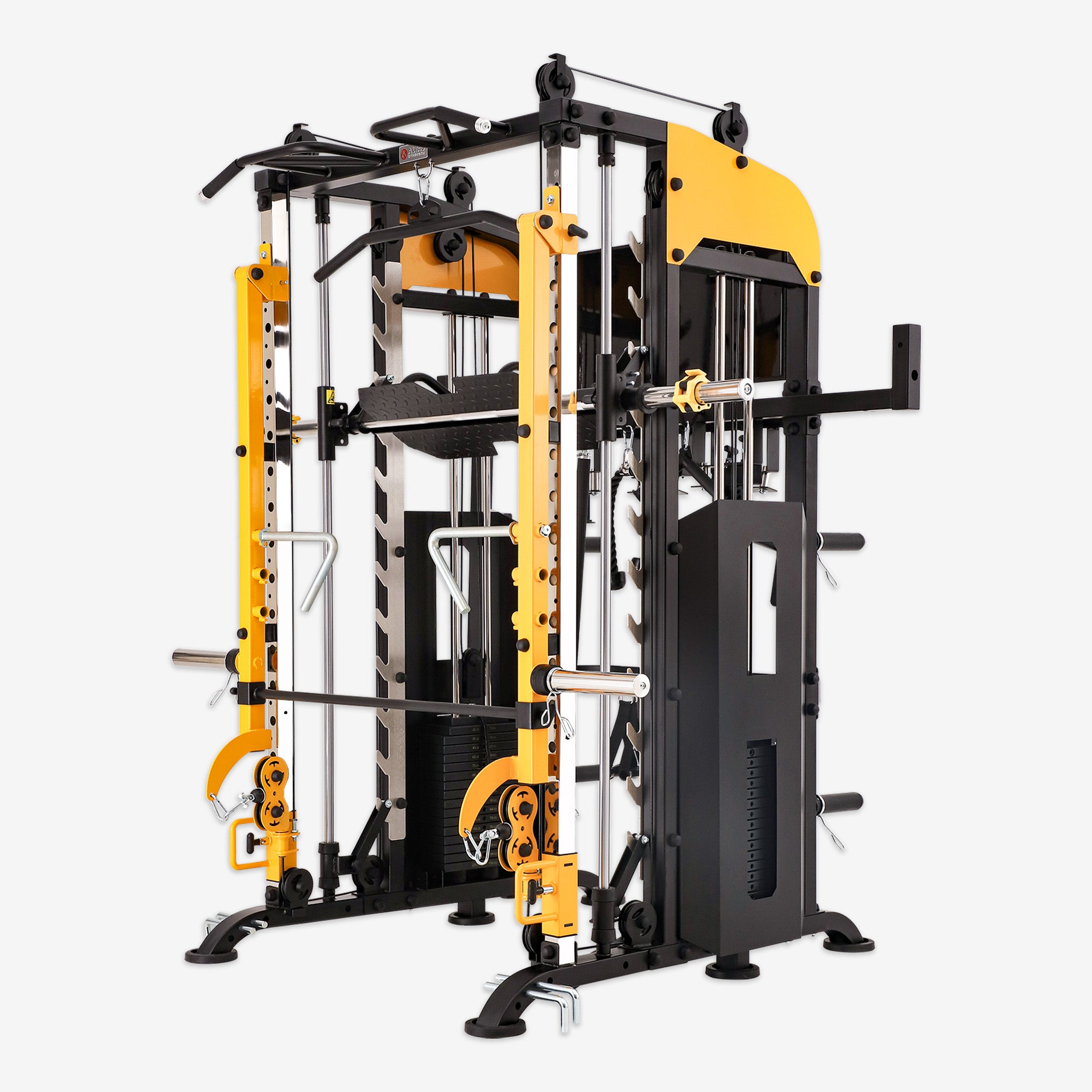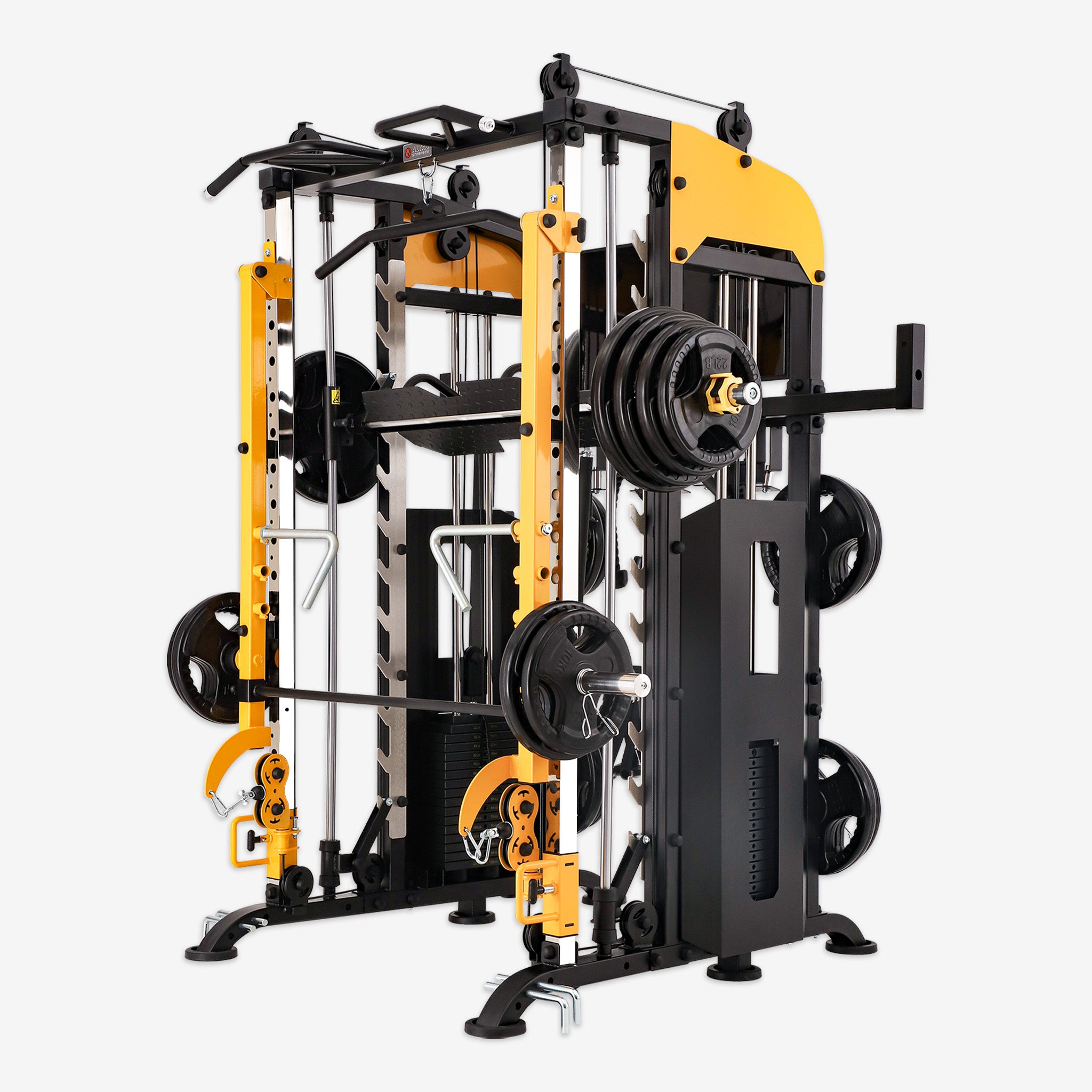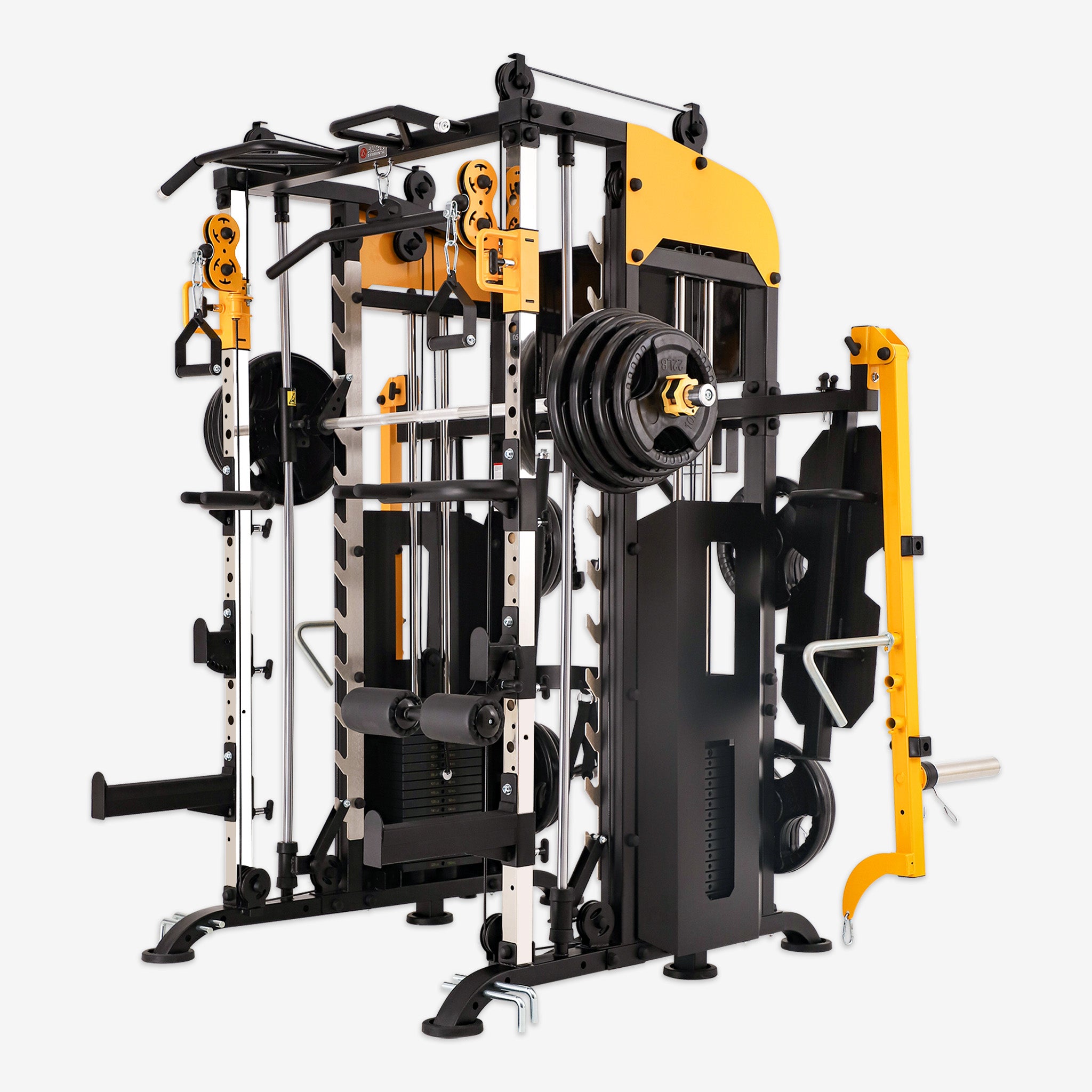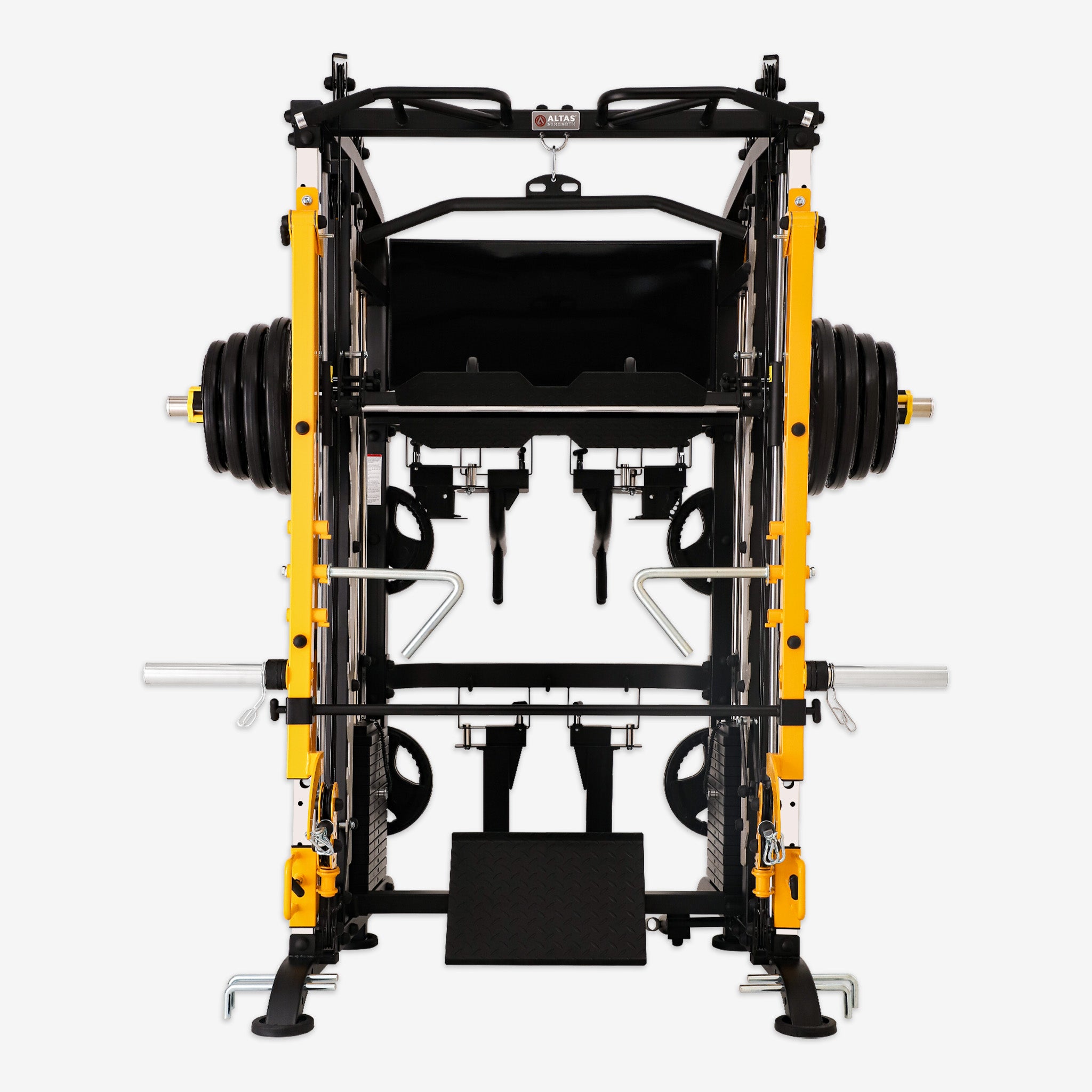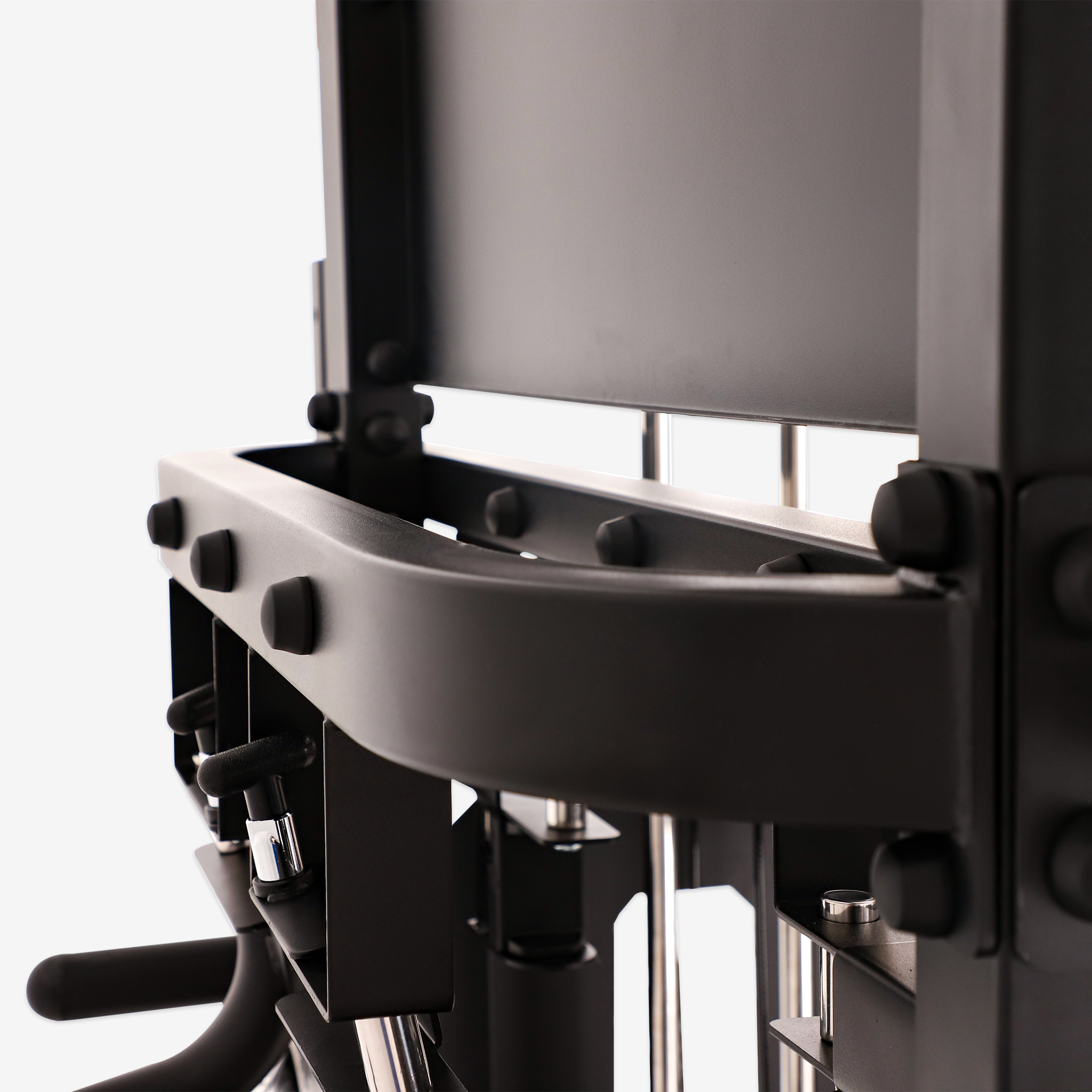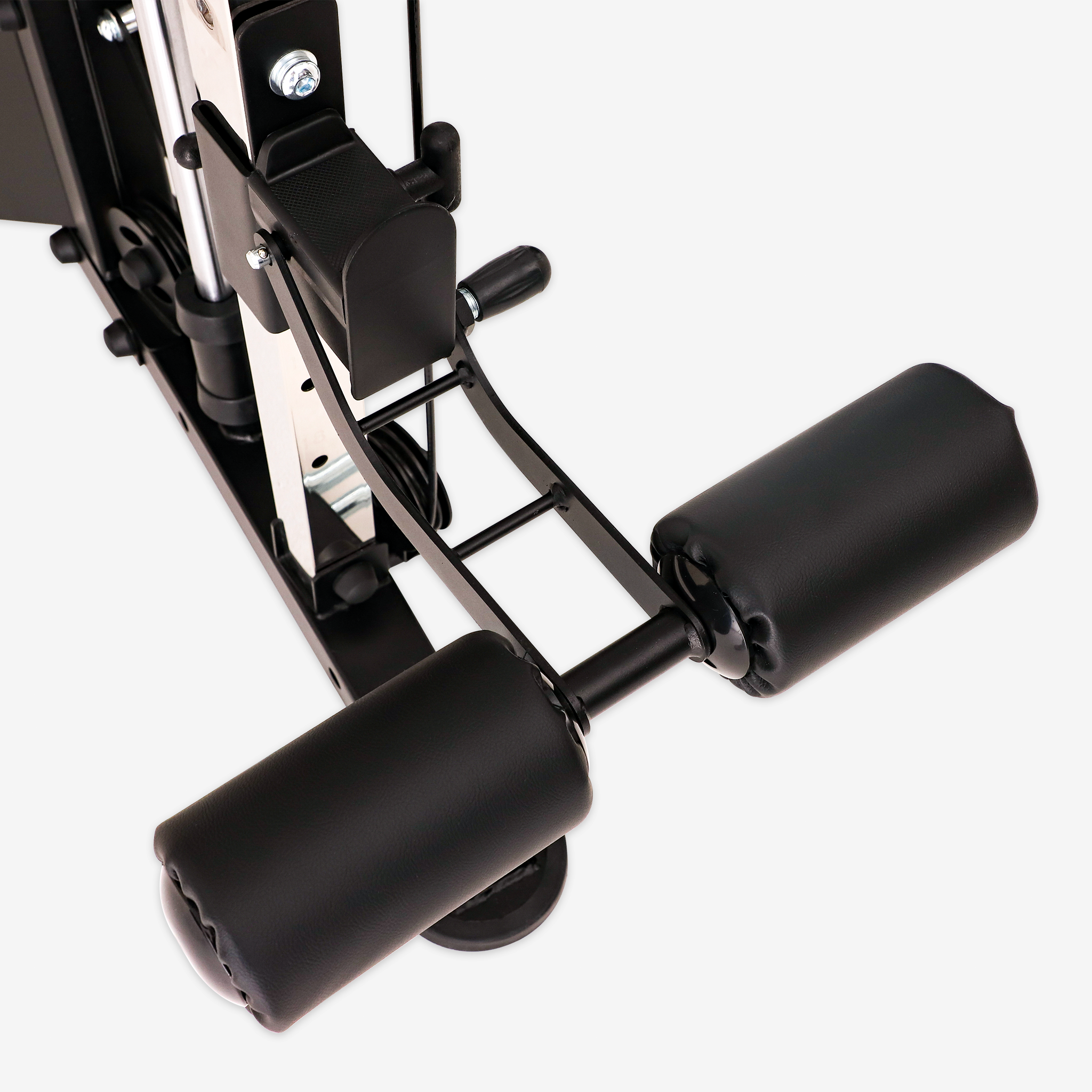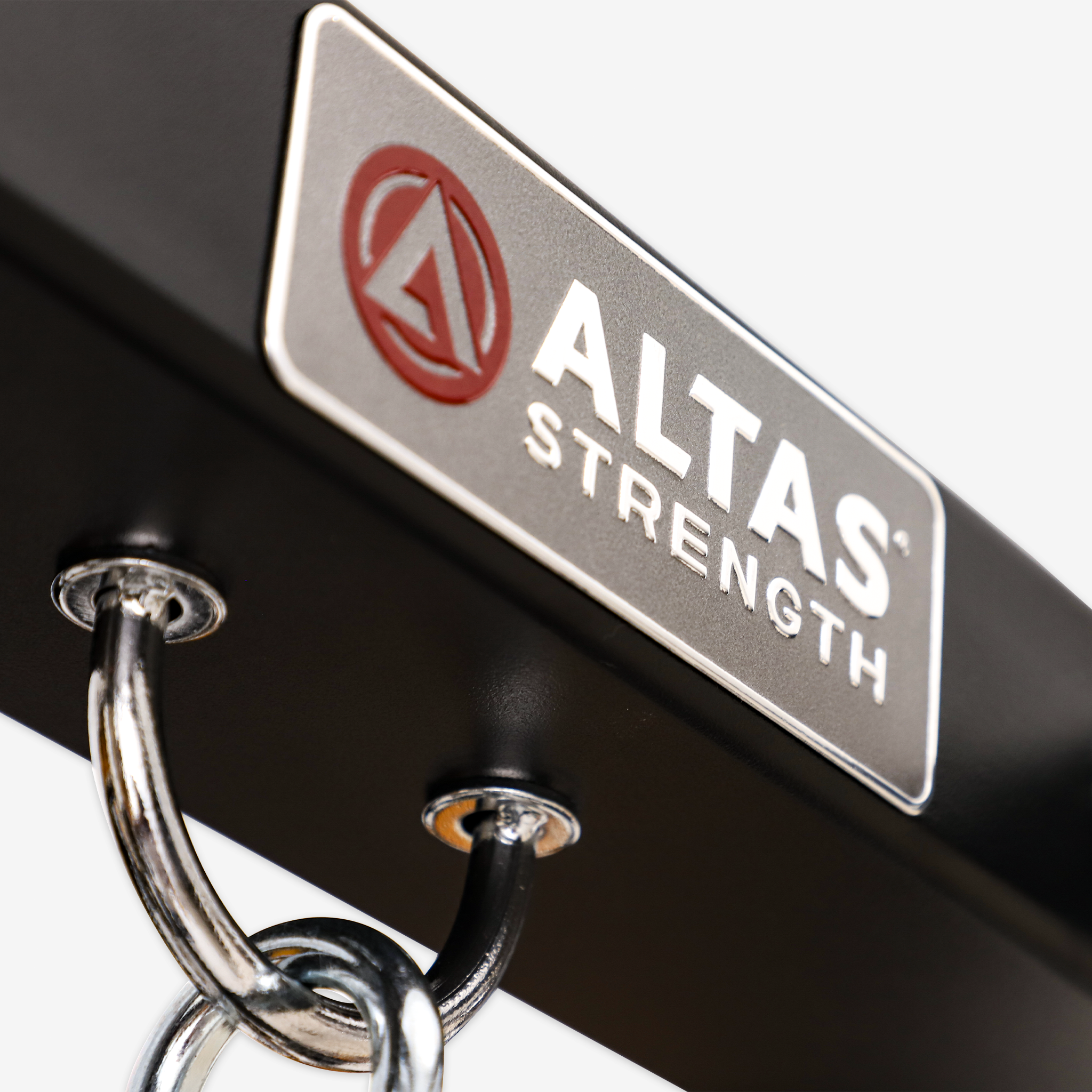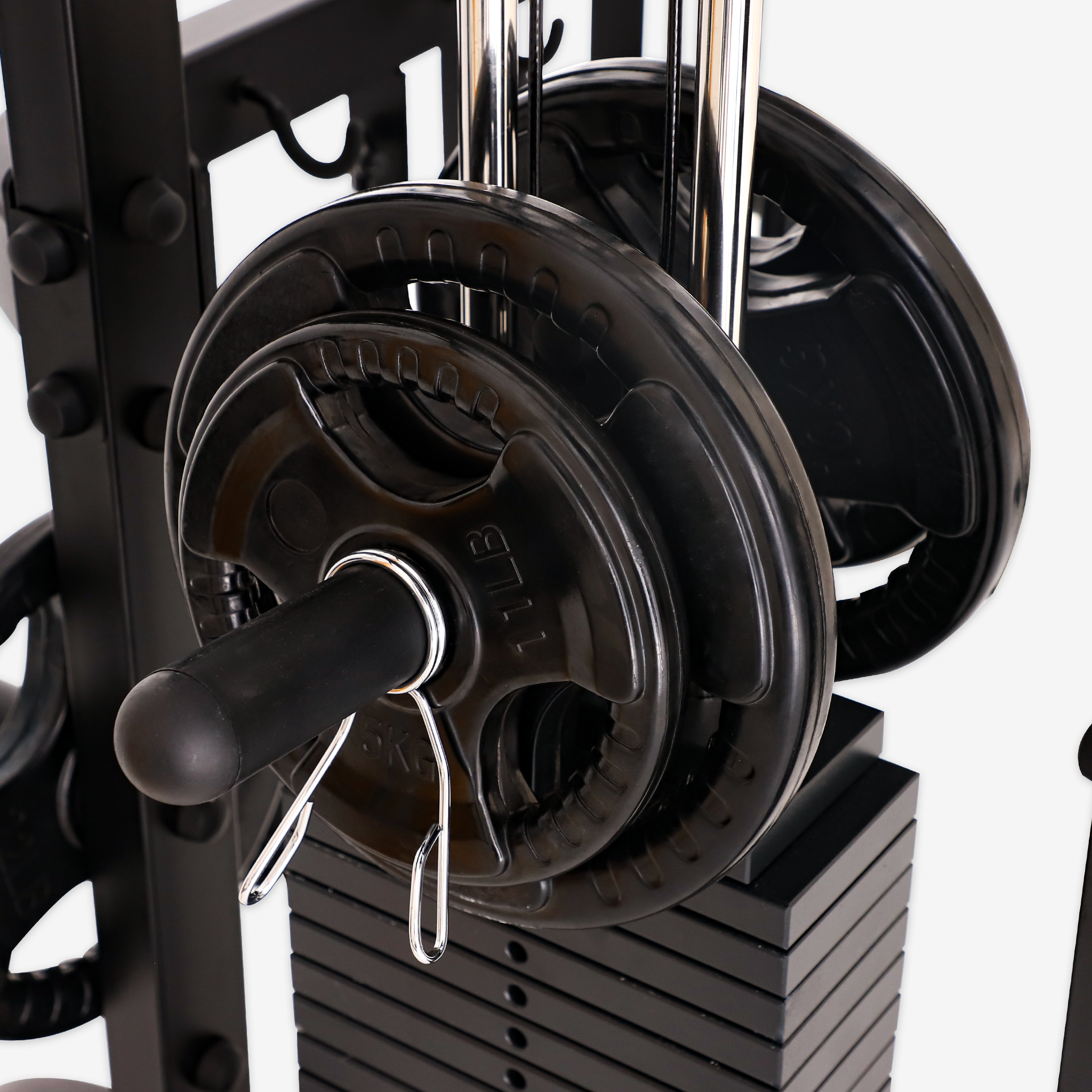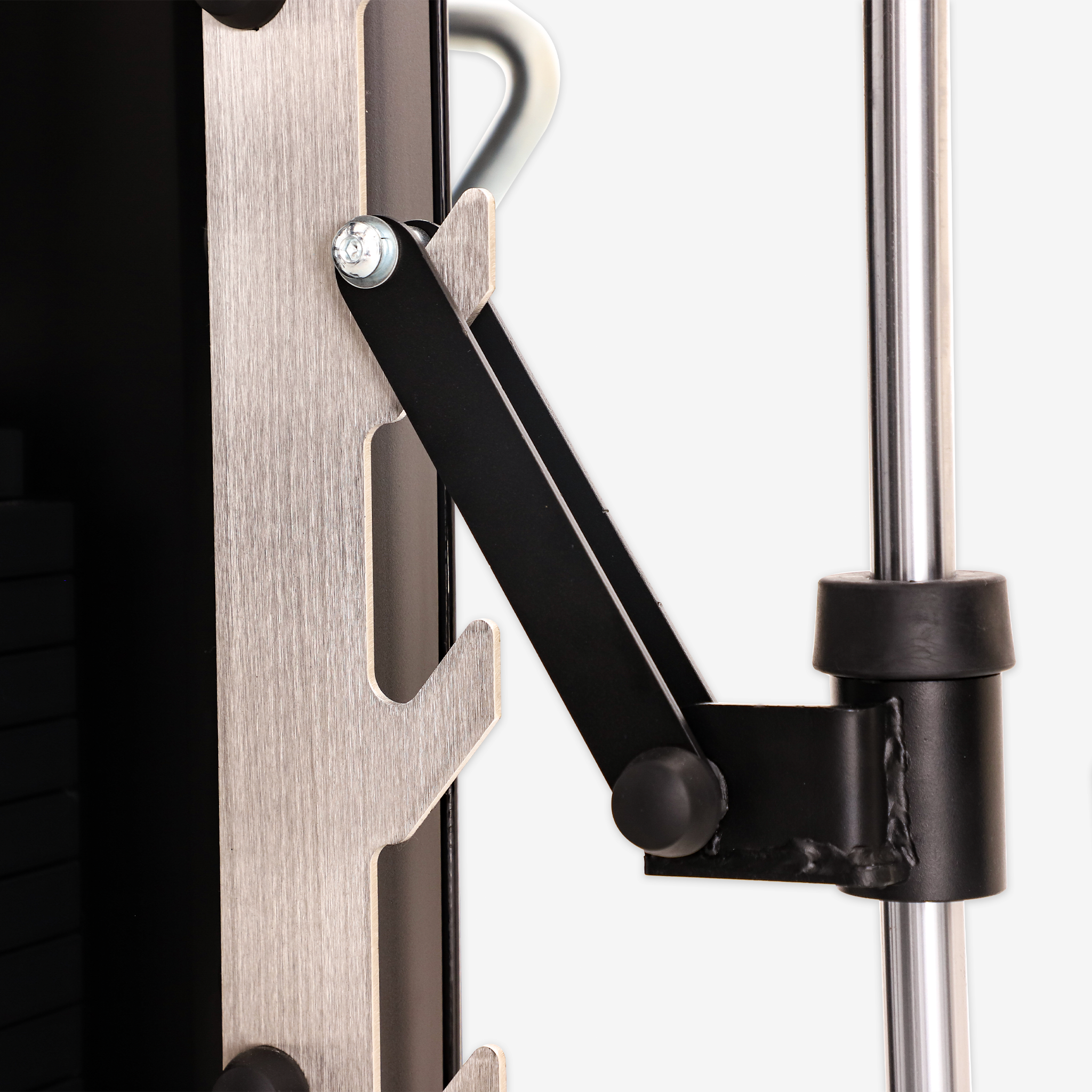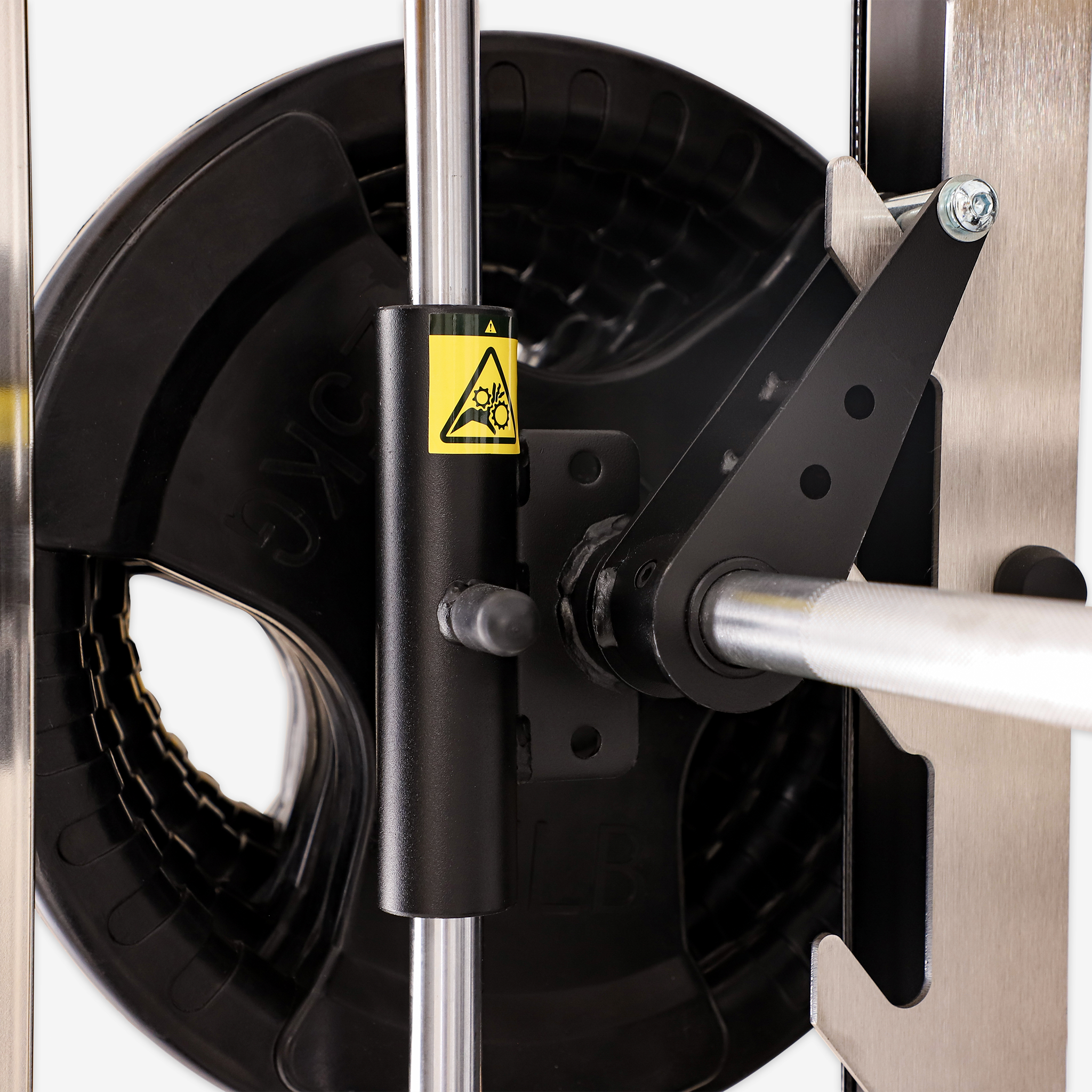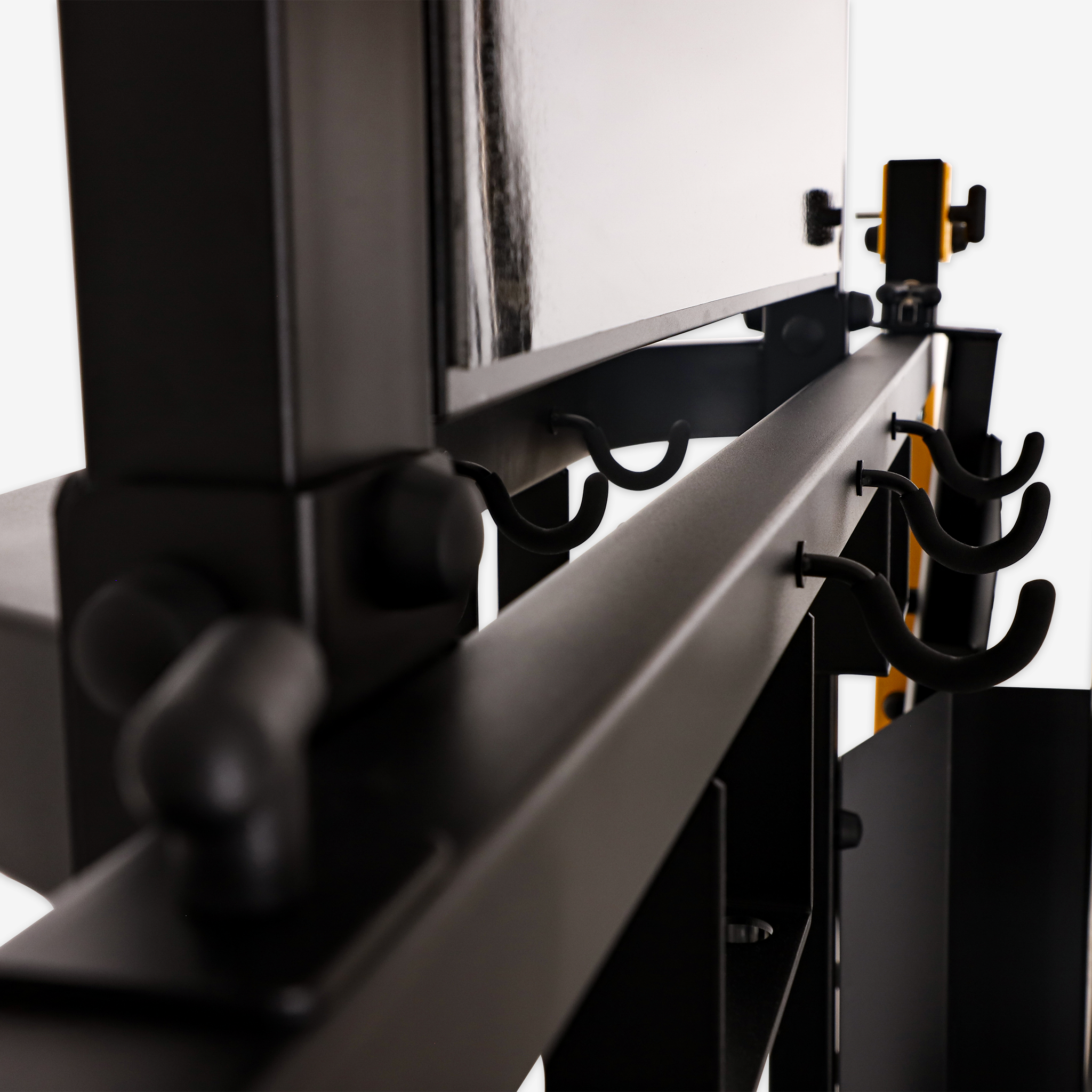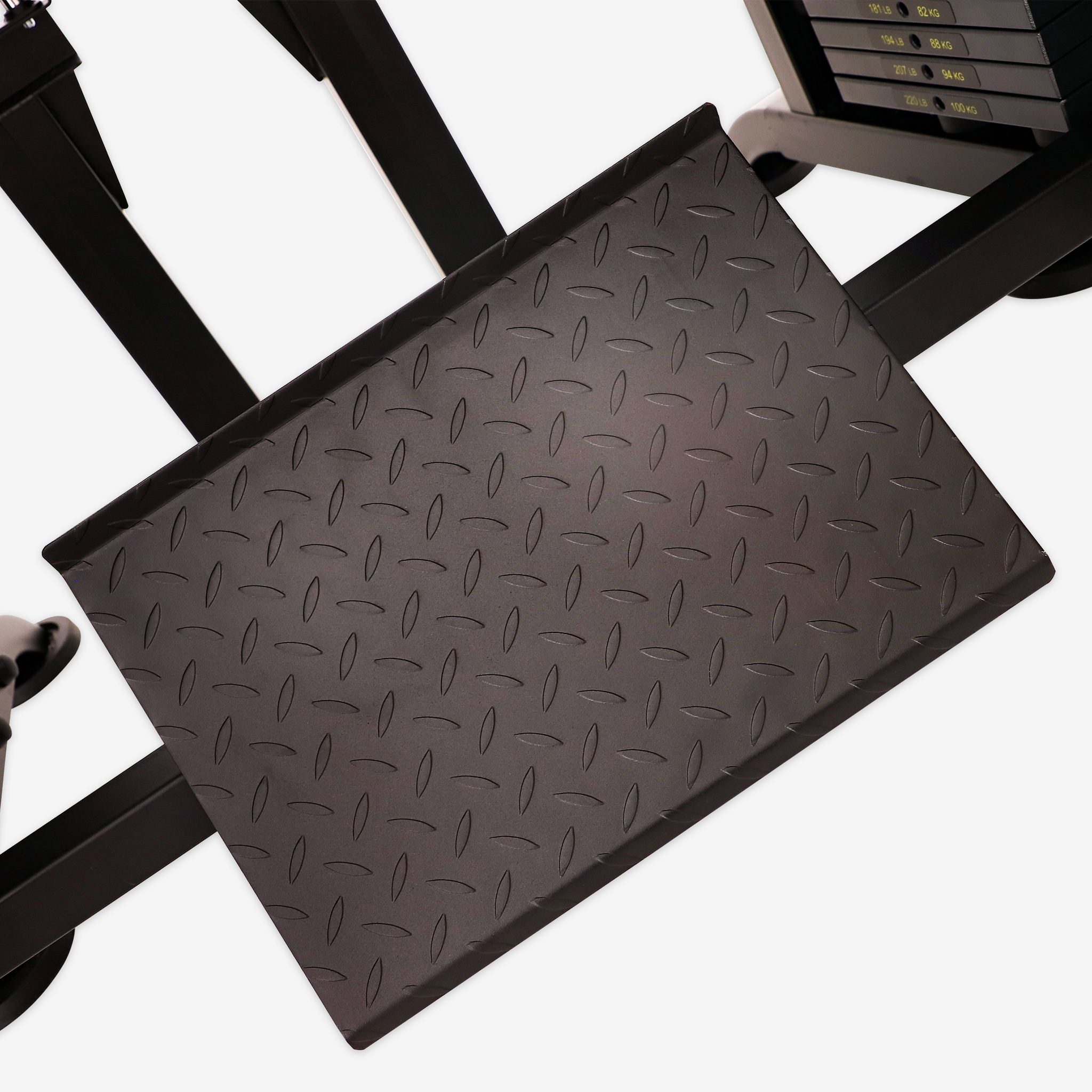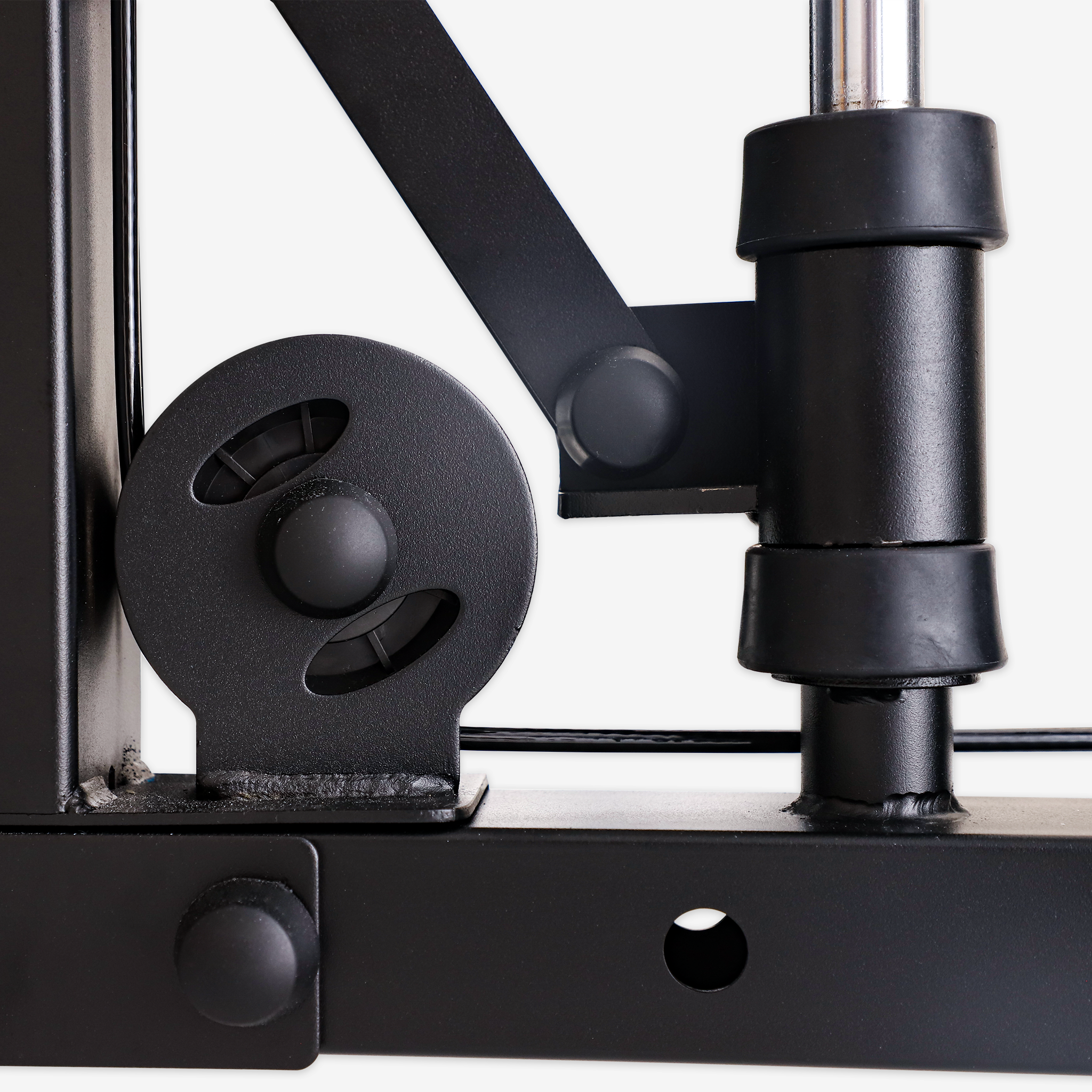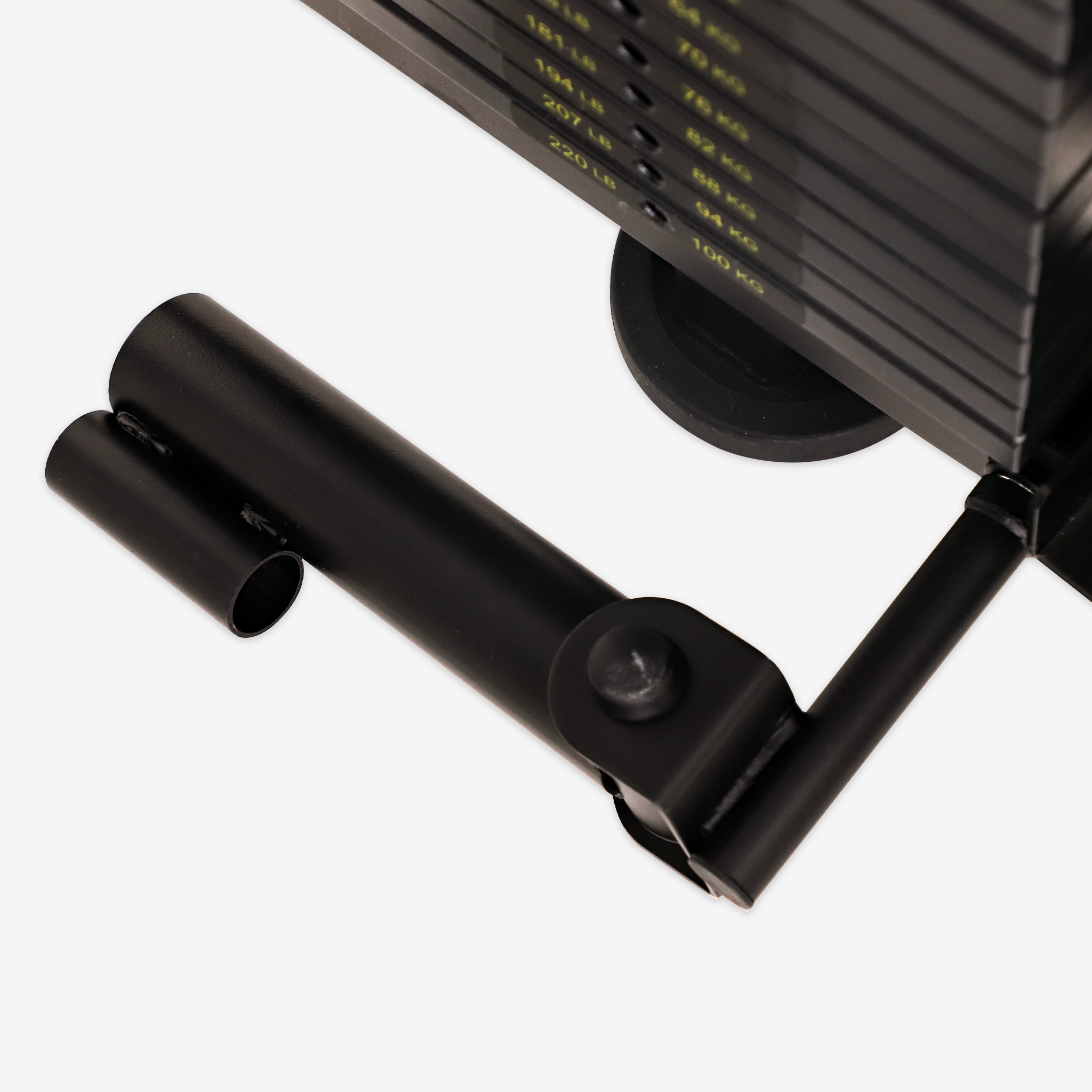1. Preparatory Tasks
Adjusting the Height:
Begin by setting the barbell on the Smith machine to a position slightly below shoulder height. This adjustment allows you to effortlessly lift the barbell onto your shoulders when starting the exercise.
Choosing the Weight:
Select an appropriate weight based on your training level. Beginners may start with an empty bar or a light weight, gradually increasing the load as strength improves.
2. Positioning the Barbell
Stand beneath the Smith machine, ensuring that your shoulders are positioned directly below the barbell. Place your feet shoulder-width apart, with your toes angled slightly outward.
3. Positioning and Force Application
Unlocking the Barbell:
Grasp the barbell with both hands, ensuring they are positioned slightly wider than shoulder-width apart. Stand upright with your chest lifted and shoulders relaxed. Push through the soles of your feet to lift the barbell off the rack.
Standing Position:
Position your feet shoulder-width apart or slightly wider, with your toes angled slightly outward. Maintain a natural, upright posture with your core engaged.
4. Perform Squats
Squatting:
Gently bend your knees and hips, moving your hips backward while keeping your back straight. Your knees should align with the direction of your toes and not extend beyond them. Lower yourself until your thighs are parallel to the ground or slightly below parallel.
Rising:
Propel yourself upward using the strength of your thighs and glutes, gradually returning to the starting position. Ensure the movement is slow and steady, avoiding the use of momentum.
5. Points of Consideration
Maintain Stability:
Keep the core engaged throughout the entire movement, avoiding any forward or backward lean. Utilize a mirror to observe your posture and ensure correct form.
Breathing Rhythm:
Inhale as you lower into the squat and exhale as you rise. This helps enhance stability and strength output.
Safety First:
Avoid using excessively heavy weights without the guidance of a coach. Warm up with appropriate weights and gradually increase the load.
6. Common Errors and Corrections
Curvature of the Back:
Avoid allowing your back to curve while squatting. Maintain an upright posture to ensure the movement is executed correctly.
Insufficient Squat Depth:
A lack of adequate squat depth can adversely affect the effectiveness of the exercise. Ensure that your thighs are at least parallel to the ground, and if conditions permit, gradually increase the depth of your squats.




